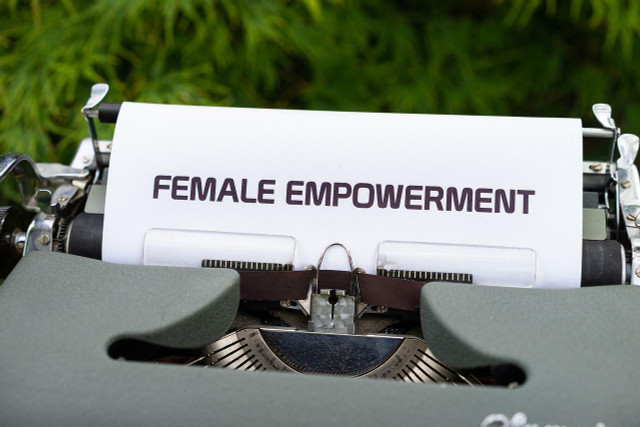
Toxic femininity describes how, under the pressure of patriarchy, those read as women harm each other and thereby prevent progress. You can find out more about the sociocultural phenomenon here.
Toxic Masculinity is now a well-known term. He describes the behaviors by which some male reads exercise power and control. The assumption here is that those who are most likely to conform to male stereotypes have the greatest chance of social advancement and recognition. Toxic masculinity also manifests itself in violence and discrimination against other genders. But even people who are read by men, who do not or only partially correspond to male role models, suffer from the phenomenon.
But now we are talking about toxic femininity. Is this a direct equivalent of toxic masculinity? Do the behaviors of people read as women also contribute to maintaining the patriarchy? And if so, how are they expressed, where do they come from and how can we overcome toxic femininity?
Note: Below you will find the terms “women*” and “men*”. The gender asterisk behind the two terms indicates that they are social constructs and not fixed biological categories. Accordingly, the term woman* includes all persons who define themselves as such, are defined in this way or see themselves made visible under this term.
What is toxic femininity?
Maybe you know Hollywood blockbusters like “Duff”, “Bride Wars” or “Mean Girls”. In these and numerous other films you will see female characters who (usually driven by jealousy) behave enviously and scheming among themselves and want to harm each other. For example, the protagonist has a problem with the “most popular girl in school” who is always perfectly styled, has larger breasts and also gets good grades. These two characters then go head-to-head against each other and plot devious plans against each other.
This is a form of toxic femininity. In this context, the American blogger Tavi Gevinson coined the term “girl hate”: If another woman* fulfills role models and male expectations better than we do, we judge ourselves for our inadequacy, feel resentment, envy and the urge to hate the other wanting to stop a person.
Such sentiments and thoughts arise from the fact that women* are female socialized in a patriarchal society. So you grow up in a system in which it is primarily men* who shape and control values, norms, patterns of thought and behavior.
As girls* and women* in such a society, we learn to feel a strong dislike for other people of our gender when they appear to be better than us. According to Gevinson, this is mainly because there can only be “ONE cool girl, ONE funny girl, ONE smart girl” in a group of people. This way of thinking is a central and historically grown component of patriarchy. So many women* are used to only competing with each other, but not with men*. For men*, for example, there are more opportunities for social advancement.
As a result, women* are generally clearly outnumbered on executive boards, companies and associations. For fear of being pushed out by another female person, “girl hate” is often practiced instead of fighting the patriarchy itself.
Breaking free from toxic femininity as a woman* is not easy. After all, these are thought structures and behavioral patterns that we have internalized since childhood. That there can only be one cool, pretty and clever girl is shown to us, for example, by Pony Hütchen in “Emil and the Detectives”, Hermine in “Harry Potter” or Gaby in “TKKG”. One of the original models for this principle is Smurfette in the Smurfs. Accordingly, the phenomenon is also known as the “Smurfette principle”.
Toxic Femininity: Just as Harmful as Toxic Masculinity?

(Photo: CC0 / Pixabay / viarami)
Gevinson makes it clear that girl hate and toxic femininity serve primarily to perpetuate patriarchy. Because instead of solidarity together for more equal rights Struggling, many women* are busy holding back each other in their careers and life paths.
This is also a key aspect that separates toxic femininity from toxic masculinity: the latter harms all genders and puts the seemingly “manliest men” in positions of power. Toxic femininity, on the other hand, only harms people who are read as female and may only ensure that the “most feminine and scheming woman” is allowed to remain part of a male*-dominated group (e.g. a club or board of directors).
The two phenomena are therefore not pairs of opposites, but aspects of the same problem. In some cases, toxic femininity is also understood as a component of toxic masculinity. Because both forms are aimed at reproducing the patriarchal society and thus keeping it alive.
Psychological explanations: Where does the toxic behavior come from?
According to the online magazine Medical News Today, numerous scientific studies have shown that many women* are competitive with one another at work, at school or at university and want to harm one another. Since the competition among women* is usually more subtle than it is among men*, the phenomenon has been neglected in research for a long time. New psychological and sociological findings currently allow the following conclusions:
- According to Medical News Today, younger women* in particular are aligning their competitions to get the greatest possible attention from men*. This, in turn, allows them access to resources that are easier to come by in patriarchy for men*. Accordingly, this form of competition is primarily about youth and attractiveness – i.e. attributes that are particularly respected and desired by men*.
- Tavi Gevinson also sees the origin of “Girl Hate” in the fact that women* perceive each other as obstacles in the search for the right man*.
- According to researcher Joyce Benenson, women* choose more subtle forms of competition than men* to protect themselves from physical altercations. This is mainly due to the biological aspect that women* have to protect their bodies from violence for possible pregnancies and births. Therefore, women* resort to more subtle forms of aggression, such as on passive-aggressive behaviorsverbal insults or derogatory looks.
- Benenson also assumes that women* perceive other people read as female primarily as a threat and have the feeling of constantly having to defend their own social status against possibly more attractive and successful female competitors.
Toxic Femininity: Here’s how to let go of it

(Photo: CC0 / Pixabay / trevoykellyphotography)
Toxic femininity and masculinity do not bring us any further as a society, but lead to patriarchal structures being reproduced. All people who do not (sufficiently) correspond to role models and ideals of beauty are also punished, discriminated against and are more likely to be subjected to bullying in schools or at work.
So there are more than enough reasons to leave toxic femininity behind. To escape girl hate, journalist Ann Friedmann developed the shine theory. This is aimed specifically at women* and says something like: If you see another woman* who intimidates you because of her beauty, intelligence or her professional career, make friends with her. Together you can then “shine even brighter”.
However, this theory is controversial. The Zeit author Emilia von Senger points out that this theory remains trapped in patriarchal role models. Because it is ultimately based on a female striving for optimization, in the sense of: If we both have professional success, correspond to some extent to social ideals of beauty and are also intelligent, we can perhaps meet the demands of patriarchy on women* together. The fact that women* must always look attractive, not complain and always smile is a central part of this theory.
In order to overcome the patriarchy, the concept of “Sisterhood” by the US author bell hooks is more effective. It is about solidarity among women* who are aware that they are affected by different forms and degrees of social discrimination depending on their social class, origin or skin colour. Knowing about our different horizons of experience and backgrounds, we can unite and fight together for the abolition of oppressive structures.
Read more on Techzle.com:
- LGBTQ+: You shouldn’t miss these 6 series and films
- Gender Data Gap: Why our world is not made for women
- Gender-neutral: That’s what gender-fair language is all about